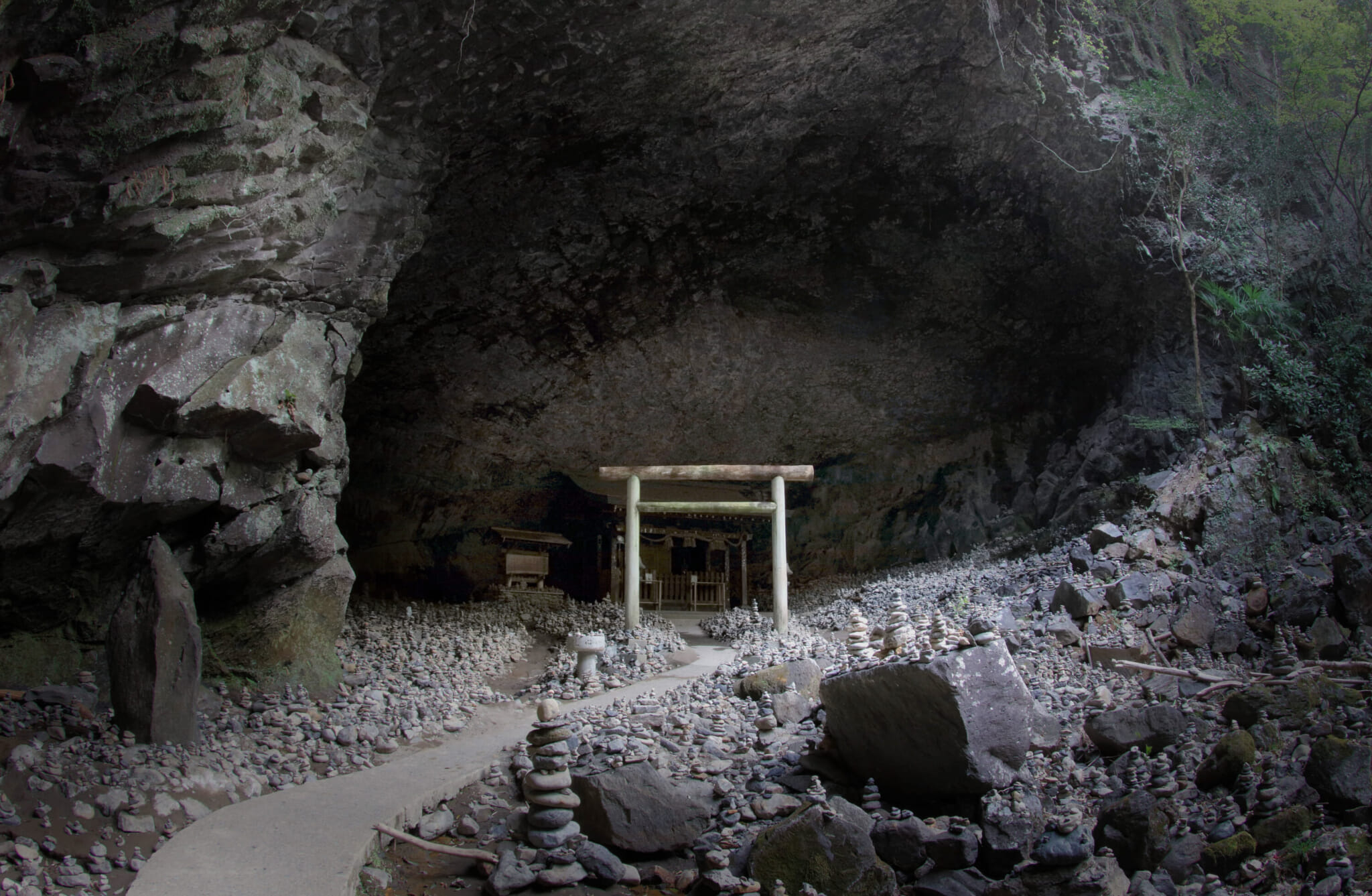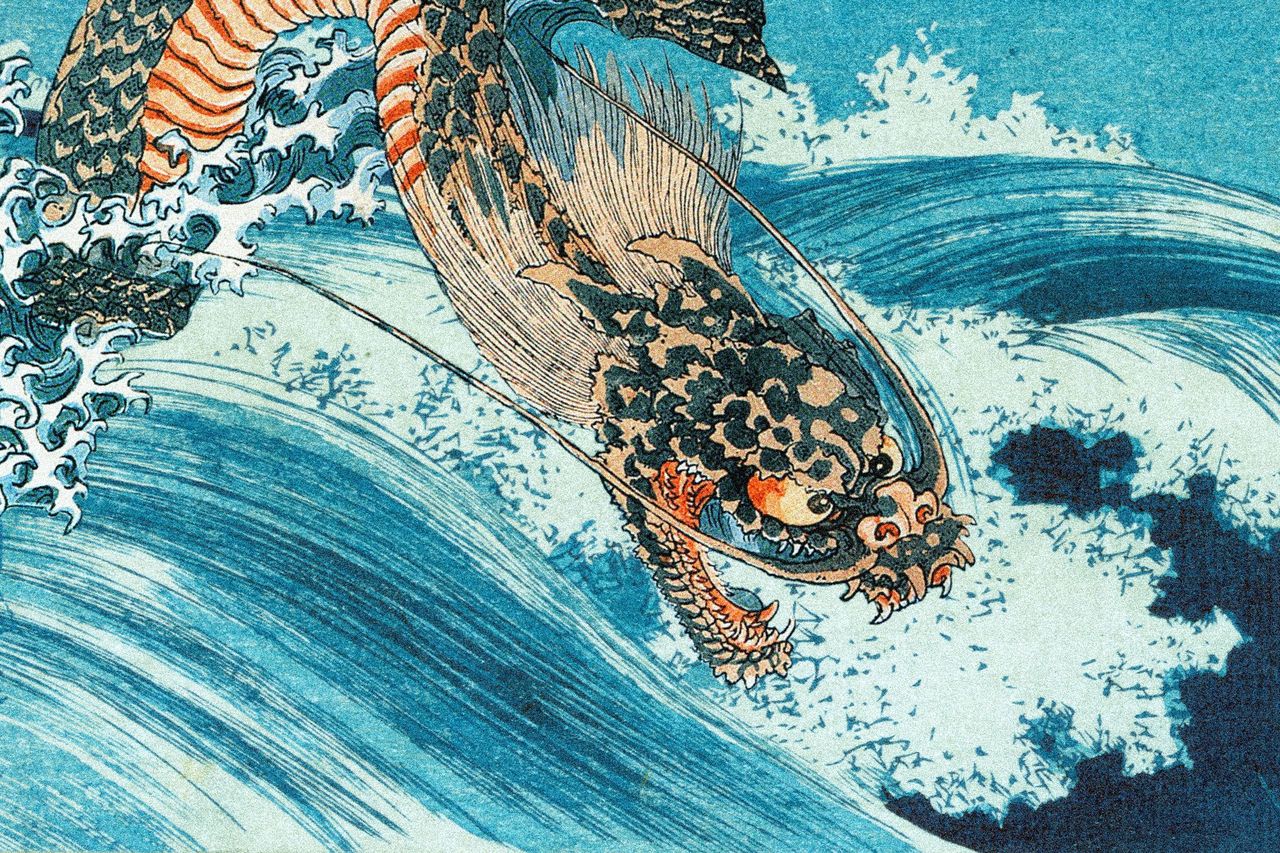Europe and the US have so many stories about characters going on perilous journeys or sacrificing themselves to save the world because Christianity and Greek classics exert a powerful influence on Western culture, sometimes subconsciously, sometimes not. It works the same way in Japan. Having only a brief (but bloody) acquaintance with Christianity and never getting that much into Homer, Japan instead mainly takes inspiration from its own legends, folklore and mythology for entertainment purposes. Take Godzilla for example. While the kaiju was intentionally modeled on the rhedosaurus from The Beast from 20,000 Fathoms (1953), it also shows a lot of overlap with Japan’s most famous traditional myths.

The City Destroyer and The Horse-Flaying God
In his translation of the Kojiki, the oldest Japanese text chronicling Japanese myths and imperial lineage, Gustav Heldt rendered the name of the god Susanoo in English as “Rushing Raging Man” to the objections of no one. The brother of Amaterasu, one of the most important deities in the Shinto pantheon, Susanoo is a … multifaceted figure, which here is a euphemism employed in the hopes of not incurring his wrath.
Often associated with the sea and storms and depicted as a fearsome warrior, Susanoo once destroyed his sister’s rice fields, defecated in her palace and even threw a flayed horse into her weaving room. The last “prank” caused the sun goddess to retreat to the Heavenly Cave, extinguishing light from the world. Yet after that, Susanoo underwent a big transformation. Banished to Earth, he became a heroic figure by defeating the eight-headed dragon Yamata no Orochi.
Godzilla, similarly, started out as the embodiment of rage and destruction in the original 1954 movie. Laying waste to Tokyo and raining down nuclear fire, that kaiju would 100% also have flayed a horse if its hands were dexterous enough.
Over time, though, Godzilla changed. The modern version of the character is often portrayed as a savior of humanity, which goes back to the 1964 film Ghidorah, the Three-Headed Monster, where Godzilla becomes a hero by…defeating a multi-headed dragon. Thankfully, no scenes of Godzilla pooping ever made it to the big screen.
The King of the Monsters and the King of the Sea
Japan has so many water dragon gods that there’s an entire branch of Shinto/folk beliefs dedicated to worshiping these majestic creatures of myth. One of the most powerful of the group is Ryujin, the king of all sea life who, much like Susanoo, can control storms and bring down his wrath on all those who cross him.
Unlike Susanoo, though, Ryujin’s weapon of choice wasn’t skinned equines but, occasionally, fire. In Asian mythology, dragons usually don’t breathe fire, yet Ryujin is sometimes associated with this element. One of the ways Japan worships the kami is through the Ryujin Fire Festival, which involves massive Ryujin puppets made to spit pyrotechnic flames, in Gero, Gifu Prefecture.
It’s not a massive leap from a sometimes benevolent, sometimes vengeful fire-breathing dragon dubbed the king of the sea to the “king of the monsters,” whose signature weapon is hellish halitosis. We cannot say for sure that the people involved with Godzilla’s creation had Ryujin on their minds while working on the kaiju, but it is noteworthy that Ryujin apparently also had the ability to transform into a “whale-like dragon,” since the name “Gojira” is famously a portmanteau of “gorira” (gorilla) and “kujira” (whale.)
The Titan Among Japan’s Mythological Titans
Japan has no shortage of giant monsters. Some are more supernatural, like Kerakera Onna, who takes the form of a gigantic, heavily made-up woman who only appears in red-light districts, laughing at the prostitutes, their customers and the life that she herself once led and which ultimately killed her. Godzilla doesn’t have much to do with her.
Godzilla’s roots are probably more closely linked to the likes of Gashadokuro, a giant skeleton made up of the bodies of warriors and soldiers who died in battle but were never given proper burial. Sort of like Voltron powered by malice from beyond the grave. There might also be some Bakekujira in Godzilla’s pedigree. Bakekujira are apparitions of whale skeletons or carcasses said to bring calamity to all those who witness them, their zombie look being a possible influence on the terrifying reimaged visage of Shin Godzilla.
One could also look for similarities between the world’s most famous kaiju and Daidarabotchi. Though the latter look like bald humans, their massive size has made them closely linked with mountains and the world of nature, the same position that Godzilla occupies as a champion of a furious Mother Earth punishing humanity for the use of nuclear weapons. Finally, there’s the gigantic Umi Bozu, a mysterious creature of terror that rises from the sea to attack ships, and is possibly born from the rage of victims of drowning. Between its massive size, a penchant for dramatically emerging from the ocean and symbolizing fury, there’s a lot of Umi Bozu in how Godzilla has been depicted on screen.
There generally seem to be plenty of Japanese kami and supernatural creatures standing on each other’s shoulders and wearing a Godzilla suit, metaphorically speaking. It could all be coincidental, but a much more sensible answer is that culture begets culture and that no creative accomplishment exists in a vacuum, instead carrying within it millennia of stories that came before it. Seeing as that explanation makes Godzilla sound even more fascinating, let’s go with it.









